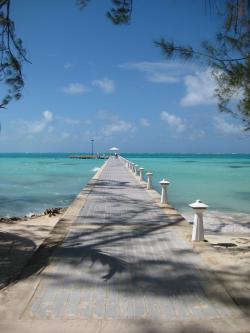jks
About
- Username
- jks
- Joined
- Visits
- 36,263
- Last Active
- Roles
- Member, Administrator, Moderator
- Points
- 640
Reactions
-
v1.390: cross compilation, SAM demodulators
-
KiwiSDR production status and availability
-
DANGER: DO NOT do a manual Debian/Linux upgrade to your Kiwi! (update: but it's okay now)
So it appears the Debian project and Beaglebone.org have stopped making updates to the Debian 8 (Jessie) release. For the Beagle, Debian 8.11 seems to be the last release. It has been run by a number of customers for a long time and also by us. So it seems safe now for Kiwi owners generally to do an upgrade and get the benefit of whatever security patches there have been between 8.5 and 8.11.
To do this login as root using ssh/PuTTY and use the following commands. (this can not be done from the Kiwi admin console tab)
If you haven't logged in this way in a while remember that your Debian root password has likely been changed to either the Kiwi admin password or the Kiwi's serial number if no Kiwi admin password has been set. The Debian root password has not been touched if you had set it to something other than the default of having no password.
See this post for details: http://forum.kiwisdr.com/discussion/1801/v1-354-security-improvements-debian-root-password-no-longer-unset-blank
A few minutes after the reboot the Kiwi server should be responding again. If you login to the Beagle and type the "dog" command you should see:cdp mst (stops the Kiwi server) cd pkup (shell alias for "apt-get -y install debian-archive-keyring; apt-get update") pkug (shell alias for "apt-get -y dist-upgrade") (lots of output, takes roughly 10 minutes) reboot
There is still the open question of how the Kiwi distribution, and thousands of Kiwi customers, will migrate to the current Debian 9 (Stretch) and/or Debian 10 (Buster) releases which are available for the Beagle. This needs time for research as there are many issues involved.Debian 8.11 BeagleBoard.org Debian Image 2016-05-13 Linux kiwisdr 4.4.9-ti-r25 #1 SMP Thu May 5 23:08:13 UTC 2016 armv7l GNU/Linux -
IP address blacklist
Not on any pulldown from the control panel. You have to use the label editing feature since you are defining the mask for a particular frequency and mode (passband). http://kiwisdr.com/quickstart/index.html#id-user-marker
On the DX label edit panel it's the last entry ("masked") on the "type" pulldown. You will see the blackout in the waterfall immediately. -
Kiwi un-registration not working?
Okay, I see what's happening. The change back in January to separate kiwisdr.com and sdr.hu registration is not fully reflected in the status code transmitted to update rx.kiwisdr.com. So the 15 minute response time won't apply in all cases. Rather, your listing will be removed after three days by the "inactivity" timeout. I have reduced this inactivity timeout to three hours instead. So your listings are now gone.. -
Kiwi un-registration not working?
Okay, I see what's happening. The change back in January to separate kiwisdr.com and sdr.hu registration is not fully reflected in the status code transmitted to update rx.kiwisdr.com. So the 15 minute response time won't apply in all cases. Rather, your listing will be removed after three days by the "inactivity" timeout. I have reduced this inactivity timeout to three hours instead. So your listings are now gone.. -
rx.kiwisdr.com now has a search field
An improvement by request of the CATsync project:
There is now a checkbox that says "open in a new tab" i.e. for when a link to a Kiwi is clicked. The checkbox value is saved in a cookie and restored on your next visit. It defaults to "checked/yes" and can also be overridden to "unchecked/no" by including the URL parameter "notab". -
v1.390: cross compilation, SAM demodulators
-
v1.390: cross compilation, SAM demodulators
-
DANGER: DO NOT do a manual Debian/Linux upgrade to your Kiwi! (update: but it's okay now)
So it appears the Debian project and Beaglebone.org have stopped making updates to the Debian 8 (Jessie) release. For the Beagle, Debian 8.11 seems to be the last release. It has been run by a number of customers for a long time and also by us. So it seems safe now for Kiwi owners generally to do an upgrade and get the benefit of whatever security patches there have been between 8.5 and 8.11.
To do this login as root using ssh/PuTTY and use the following commands. (this can not be done from the Kiwi admin console tab)
If you haven't logged in this way in a while remember that your Debian root password has likely been changed to either the Kiwi admin password or the Kiwi's serial number if no Kiwi admin password has been set. The Debian root password has not been touched if you had set it to something other than the default of having no password.
See this post for details: http://forum.kiwisdr.com/discussion/1801/v1-354-security-improvements-debian-root-password-no-longer-unset-blank
A few minutes after the reboot the Kiwi server should be responding again. If you login to the Beagle and type the "dog" command you should see:cdp mst (stops the Kiwi server) cd pkup (shell alias for "apt-get -y install debian-archive-keyring; apt-get update") pkug (shell alias for "apt-get -y dist-upgrade") (lots of output, takes roughly 10 minutes) reboot
There is still the open question of how the Kiwi distribution, and thousands of Kiwi customers, will migrate to the current Debian 9 (Stretch) and/or Debian 10 (Buster) releases which are available for the Beagle. This needs time for research as there are many issues involved.Debian 8.11 BeagleBoard.org Debian Image 2016-05-13 Linux kiwisdr 4.4.9-ti-r25 #1 SMP Thu May 5 23:08:13 UTC 2016 armv7l GNU/Linux







